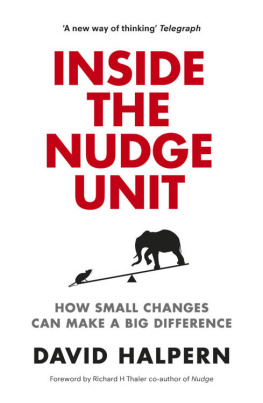ALSO BY SUE HALPERN
Four Wings and a Prayer:
Caught in the Mystery of the Monarch Butterfly
FIRST VINTAGE BOOKS EDITION, FEBRUARY 1993
Copyright 1992 by Sue Halpern
All rights reserved under International and Pan-American Copyright Conventions. Published in the United States by Pantheon Books, a division of Random House, Inc., New York, and simultaneously in Canada by Random House of Canada Limited, Toronto. Originally published in hardcover by Pantheon Books, a division of Random House, Inc., New York, in 1992.
Portions of this work were originally published in The New York Times Magazine, Antaeus, Rolling Stone, and The New York Review of Books.
Some of the names of persons and places have been changed.
Grateful acknowledgment is made to the following for permission to reprint previously published material: Equifax Inc.: Excerpt from a national opinion survey conducted for Equifax Inc. by Louis Harris & Associates and Dr. Alan F. Westin, professor of public law and government, Columbia University. Reprinted by permission of Equifax Inc., 1600 Peachtree Street, Atlanta, Georgia 30302. Farrar, Straus & Giroux, Inc.: Excerpts from Enormous Changes at the Last Minute, copyright 1974 by Grace Paley. Later the Same Day, copyright 1985 by Grace Paley. Reprinted by permission of Farrar, Straus & Giroux, Inc. MCA Music Publishing: Excerpt from Free Bird, words and music by Allen Collins and Ronnie Van Zandt. Copyright 1973, 1975 by Duchess Music Corporation and Hustlers Inc. Rights administered by MCA Music Publishing, a division of MCA Inc., New York, NY 10019. All rights reserved. Reprinted by permission. Longman Group UK Limited: Excerpts from the article Politics and Conscience by Vaclav Havel, translated by Erazim Kohak and Roger Scruton from the Salisbury Review, Volume 2, January 1985. Translation reprinted by permission of Longman Group UK Limited. Rights to the underlying work administered by Sanford J. Green-burger Associates on behalf of Rowohlt Verlag, Federal Republic of Germany.
Library of Congress Cataloging-in-Publication Data
Halpern, Sue.
Migrations to solitude / Sue Halpern. Ist Vintage Books ed.
p. cm.
Originally published: New York: Pantheon Books, C1992
eISBN: 978-0-307-78749-1
1. Privacy. 2. Solitude. I. Title.
[BF637.P74H35 1993]
155.92dc20 92-56362
Photography Fearn Cutler
Author photograph Bill McKibben
v3.1
Contents
To Bill
With gratitude, in love
Authors Note
D EEP among the birch, some miles back from my house in the Adirondack Mountains, is a cabin where a man is said to have lived alone for a quarter century, maybe longer. Then one day, the story goes, he walked out of the woods and disappeared.
I looked for that man in the course of writing this book. I wanted to ask him a few questions. I looked in hospitals and prisons and homeless shelters and a monastery, in one small town and in the wild places around it. I was interested in his experience of solitude, not as an existential dilemma but as a physical fact. And I wanted to know, as he did, about privacy as a quality of life, rather than as a vague, contested, and often rhetorical legal concept, privacy as a matter of rights. The right to privacy is a limited, distinctly American invention. Yet the desire for privacy, anthropologists suggest, appears to be universal. That Americans have codified this desire, elevating it to a right, suggests how vulnerable to each other and to the government we feel, and how strong the desire is to be let alone.
But the language of rights is distorting. It queers our relationship to the thing itself, to privacy, and so to each other, for once we begin to talk about privacy in terms of rights the conversation turns juridical and we want to know how far we can gohow close can we live to our neighbors, how loud can we play our radios, when cant we terminate our pregnancies. The law draws a border between what is permissible and what is not, and pretty soon almost everyone is camped on that line, doing things that are perfectly legal, like sifting through their neighbors trash, things that decency and propriety would otherwise preclude. But decency and propriety are miles backtoo far back to let us see into the window of the woman next door. It didnt sound like the kind of thing we wanted to be involved in, said an executive in TRWs information services division about the companys perfectly legal decision to sell information to employers about how their employees were spending their money, but its what our customers wanted, and all our competitors were doing it.



















